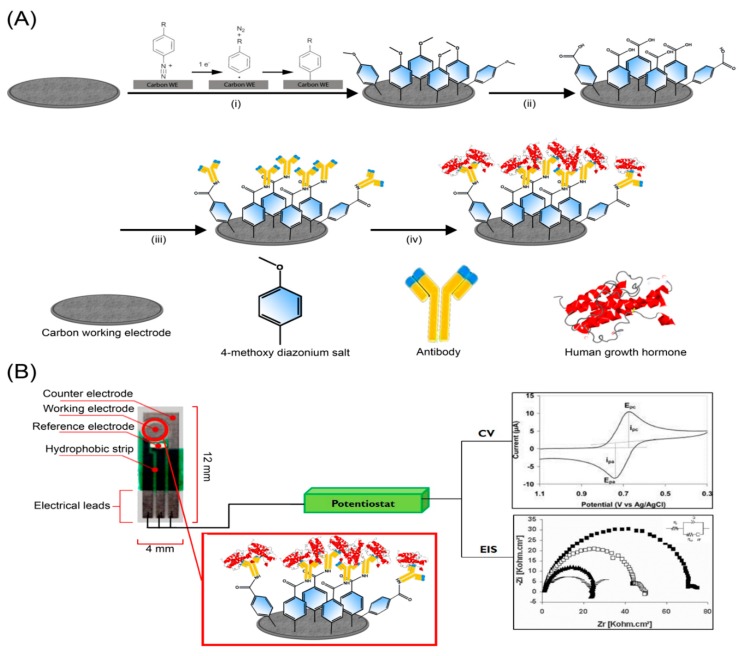Figure 1.
Conceptual illustration of the impedimetric detection of rat growth hormone (GH). (A) A film of 4-methoxybenzenediazonium tetrafluroborate (4-MBD) was immobilized on an electrode surface by electrodeposition (i); surface-confined 4-MBD molecules were electrochemically oxidized to carboxylic acid groups (ii) that were activated with 1-ethyl-3-(3-dimethyl-aminopropyl) carbodiimide (EDC) and N-hydroxysuccinimide (NHS) to allow subsequent covalent immobilization of antibodies via lysine residues (iii); GH is captured with antibodies on the surface (iv). (B) screen-printed carbon electrodes (SPCE) of dimension 4 × 12 mm in length with carbon ink-based working and counter electrodes in connection with a silver ink-based reference electrode. Electrochemical impedance spectroscopy (EIS) and cyclic voltammetry (CV) were employed to characterize SPCE and glassy carbon electrode (GCE) surfaces.

